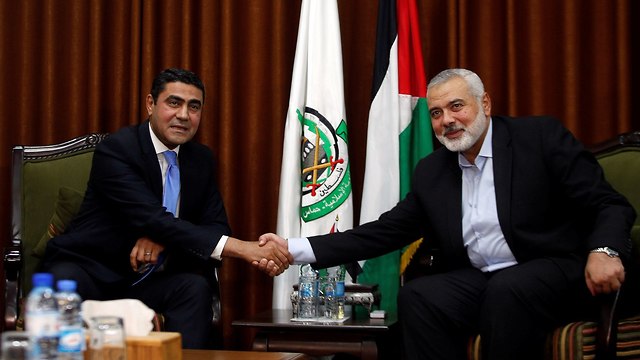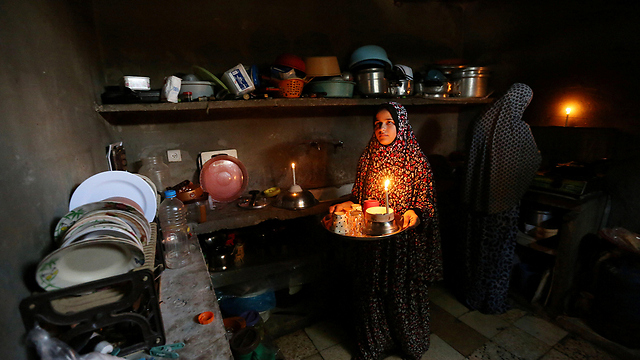

Palestinian sources: Significant progress in ceasefire deal with Israel
As part of trust-building measures, Israel continues to supply Gaza with Qatari fuel, which enables the activation of a third turbine in Gaza's power station, vastly improving the electricity supply in the coastal enclave, while violence demonstrated by Palestinians along border fence has decreased.
The sources chose not to elaborate what was achieved so far. However, both Hamas and Israel have been making trust-building steps to lower the tensions between the sides.
A Palestinian source told Ynet that Hamas is demonstrating willingness to reach understandings with Israel.
Egyptian intelligence official Ahmed Abd al-Khaliq and UN envoy to the Middle East Nickolay Mladenov are leading the mediation efforts.
The members of the Egyptian intelligence delegation entered Tuesday the Gaza Strip through the Erez crossing and held a long meeting with Hamas leaders Ismail Haniyeh and Yahya Sinwar.
According to Hamas officials, the meeting mainly revolved around the transferring of Qatari money to pay former government workers in Gaza after Palestinian President Mahmoud Abbas had taken series of measures against the strip, including slashing Gazan clerks' salaries.
Egypt proposes that the salaries of government workers—who are not part of Hamas's military wing—be transferred from Qatar under the supervision of the UN.
As part of these trust-building measures, Israel has allowed Qatari fuel to enter the strip, which enabled the activation of a third turbine in Gaza's power station, vastly improving the electricity supply in the coastal enclave.
Palestinian sources in Gaza said that most of the households in the strip currently receive eight hours of power supply per day, while only a month ago they received merely four hours of power supply per day.
The sources added that for the first time in many years, some homes even have electricity for almost 24 hours a day.
Defense minister Avigdor Lieberman said Wednesday afternoon that Gaza's fishing zone will be increased to six miles in the northern strip and to nine miles in the southern strip.
Moreover, Israel has also given its consent to building infrastructures in Gaza under international supervision and funding.
From the Palestinian end, Hamas is also showing a gradual (but not complete) decrease in the violence demonstrated during the "March of Return" skirmishes.
On Monday, the weekly demonstrations took place in the northern strip near Kibbutz Zikim, and a flotilla embarked from there, a location known for its violent clashes.
However, this was the first time since the "March of Return" campaign was launched that the terror organization did not inform the public about free transportation to the locations of the riots, as opposed to every other weekend over the past six months.
In addition, the amount of people attending Monday's demonstration was smaller than in previous weeks, with only 3,000 Palestinians taking part in the protests.
Furthermore, over the past two days, there has been a significant decrease in the number of incendiary balloons flown from Gaza into Israel.
On Tuesday, only one fire sparked in the Gaza border communities amid incendiary balloons, and on Wednesday, merely two fires erupted.
Meanwhile, the Egyptian intelligence delegation will arrive on Thursday in Gaza for the second time this week.
The delegation has already scheduled a meeting with the rest of the Palestinian factions in the strip and with the organizing committee of the "March of Return" campaign to inform them about the efforts invested in order to achieve calm on the Gaza border fence.
Nevertheless, the Hamas-led organizing committee of the "March of Return" cmpaign still calls on the Palestinian public to attend next Friday's protests along the security fence.


















